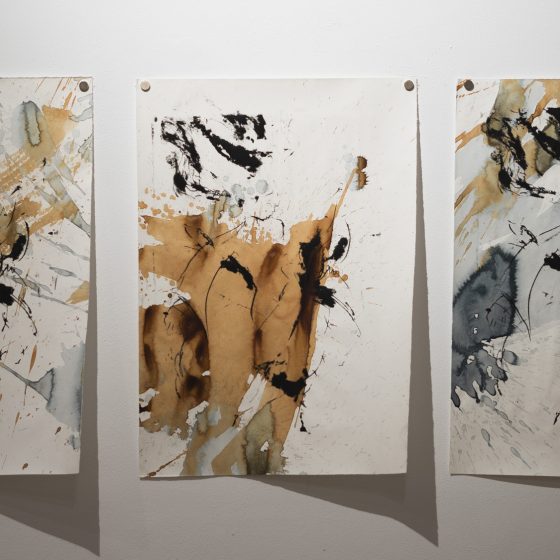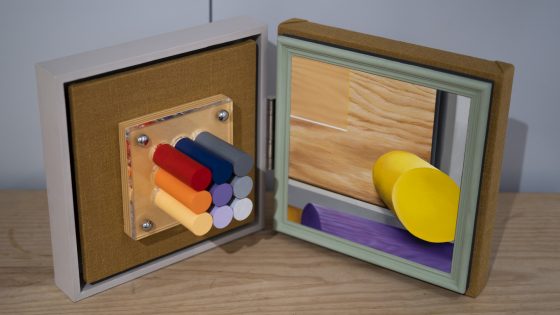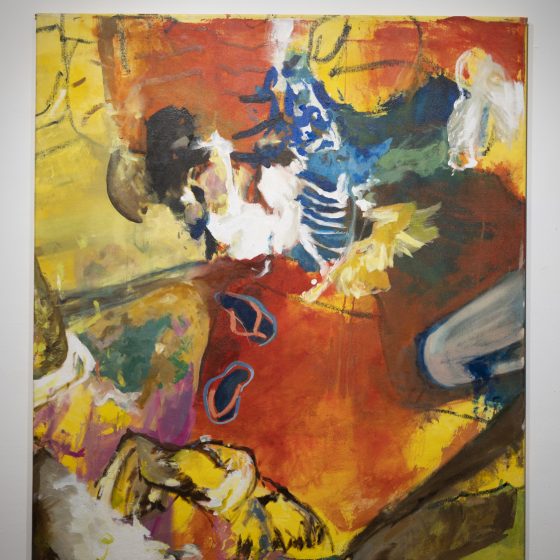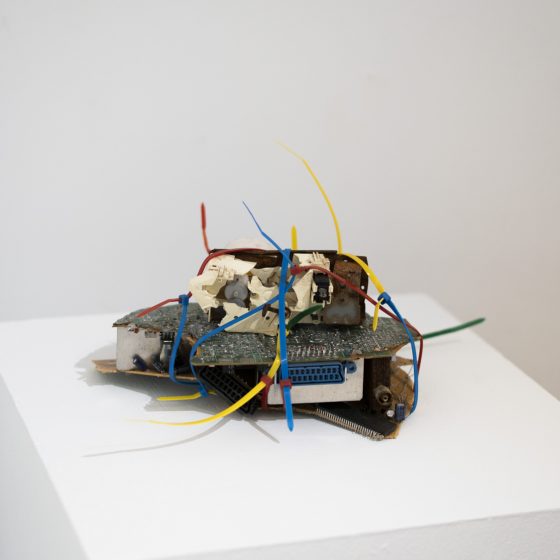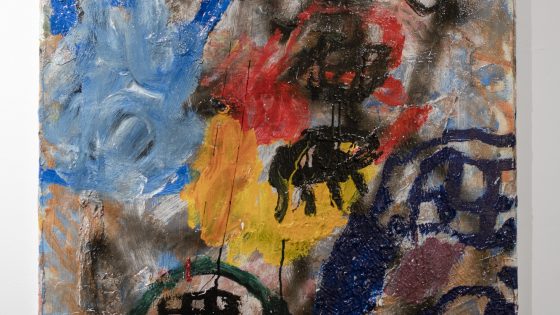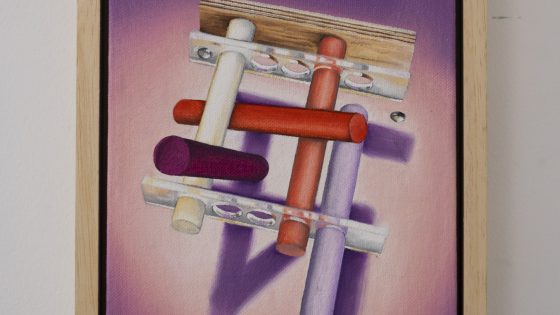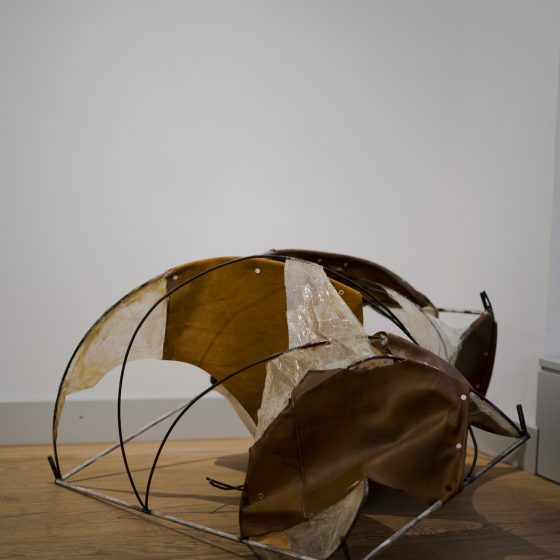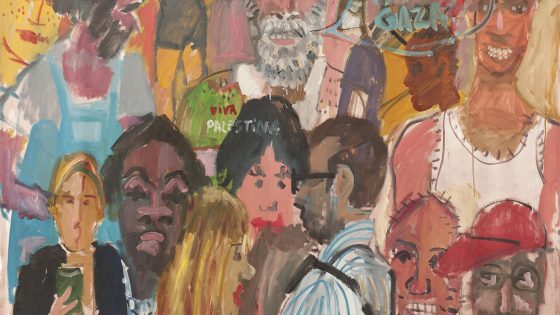Crossing the Pajares
Crossing the Pajares
«On this occasion I have approached a group of young Asturian artists from different disciplines, some very young but with solid artistic training, deeply committed to their time and social sphere. Through their work, they claim their emotional and intellectual rights, portraying and highlighting their privileged immediate environment and their creative space. We Asturians live resigned regarding the communications difficulties that we still face in the 21st century. For these artists who create on the periphery of the periphery (Pola de Siero, Avilés, Llanes, Gijón and Oviedo) the not so simple act of crossing borders and locating themselves, even for a brief period of time, in the city, the nerve center of art in Spain is extremely important for its artistic growth.
Nowadays the hyperconnectivity in which we are immersed means that the distances are not so great and that we somewhat ignore the delay in communications with the capital, but for every artist, the natural appreciation of his work is a painting, sculpture or any other artistic piece is essential to offer the viewer an individual and intimate experience in contemplating the work of art. The symbolic act of crossing the Pajares port is seen in this case as a challenge overcoming not only an orographic barrier but also a mental one. With this project I intend to support and communicate what is happening from a creative perspective in Asturias, seen as a space of innovation, sustainability and difference. It will be an expository story built from the pride of distance. «
Claudia Riesgo (Gijón, 1997)_drawing/installation:
Higher technique in engraving and printing from the Oviedo Art School. Selected in the 31st MAPPA (Exhibition of Plastic Arts of the Principality of Asturias). Her work manifests the value of patchwork, which could be understood as “upcycling.” When sewing the pieces, Riesgo tries to bring to the present the repair of everyday objects that was done in the past, paying attention to those small gestures of care for things and not getting carried away by the patterns of need-consumption-waste, which guide us in topical and that are so harmful to the planet. His delicate works are made from cardboard and plastic waste. It uses scraps sewn together that shape the message and lead to reflection. The nuances of color are obtained by macerating the paper in the dirty water of the brushes, in an accumulation of processes that simulate bad behavior and unhealthy order. of things. He is particularly influenced by the work of Lee Krasner, one of his favorite artists. She was an artist who was in a creative block when in a fit of anger she tore up all the works she had in her studio, and after seeing the pieces spread out on the floor she began to turn them into collages.
Juan Fernández Álvarez (Llanes, 1985)_painting:
In the works of Juan Fernández Álvarez the landscape genre acquires a special relevance where nature becomes the undisputed protagonist of his oil paintings. His landscapes could be imaginary portraits of him where the blue of the sea meets the green of the mountains, a mixture of “prao” and “saltpeter” that is ultimately Asturias, a natural privilege. There is something mystical about Fernández Álvarez’s work that makes us blush and hold our breath. In a burst of color it condenses the entire pictorial tradition of the artistic avant-garde and at the same time invites us to respect the nature represented in a free and subjective way by sometimes using the reverse perspective, thus introducing a psychological dimension close to oriental culture, in specifically the Chinese one. He has recently exhibited at the Pablo de Lillo gallery (Oviedo) and at ATM (Gijón).
Aida Valdés Gómez (Gijón, 2000)_painting/installation:
She graduated in Art from the Faculty of Fine Arts of Bilbao (University of the Basque Country). Currently, she works and collaborates with Flechazu Estudio (Oviedo). She considers that both places have contributed to her artistic and even human development, giving her the opportunity to participate in various scholarships and exhibitions. Among which it is worth highlighting: in 2020, Inhibition at ZAWP, La Terminal (Bilbao), as well as the creation of an image for the Faculty of Fine Arts of Bilbao; and, also, the residency at LABoral Centro de Arte y Creación Industrial that concluded in the exhibition Asturian Art in Residence in 2021. Selected in the 32nd Exhibition of Plastic Arts of the Principality of Asturias, it exhibits in the Sala Borrón (Oviedo) and in Madrid , Zaragoza or Seville. Her work between painting and sculpture is the result of research into the transformation processes of urban and industrial spaces. Her works can be considered degraded landscapes very exposed to a radical transformation and sometimes to their total disappearance of the initial concept. Reflect on new intervention strategies, reuse and incorporation into new socio-cultural networks. Without a doubt, his work avoids stereotypes, relying on non-traditional languages.
Pablo Pons Heres (Avilés, 1987)_painting/sculpture:
Graduated in Art History from the University of Oviedo. His work, of a marked expressionist nature, is a reflection of the complex Asturian artistic context and his personal concerns. His hometown of Avilés influences his creations because it is a markedly depressed and industrial city. He has recycled supports, rewritten pieces over the years or reused materials found on the street or in towns, blurring the line between painting and sculpture, consciousness and automatism. They are works that are in permanent flight and transformation. He has held exhibitions in spaces such as the Barjola Museum, Sala Borrón, Valey Centro Cultural, Escuela de Diseño de la Rioja or Centro Cultural Lope de Vega in Madrid. Pablo Pons Heres comments on his influences: «…the idea that an artistic manifestation has several levels of reading, because the books, records, movies or video games that I have enjoyed the most have always allowed me to return to them again and again, discover new nuances and messages, as if they evolved as I do. That is realizing that a cultural manifestation has a life of its own and that it is within you and you are within it.
Jorge Fernández Valdés (Pola de Siero, 1990)_painting/sculpture:
He graduated in Fine Arts from the University of the Basque Country, with further studies in the United Kingdom and a Master in Graphic Communication Design from the San Pablo CEU University in Madrid. The basis on which he works is the pictorial image, which he often transmutes into a sculptural object and vice versa. He crosses the border between two and three dimensions without fleeing from digital media and specialized software filters. This 2023 he has shown his latest series “between coordinates” at the Avilés Cultural Factory and one of the pieces has been awarded second prize in the XVII Art Contest of the Ourense Provincial Council.
– Natalia García Fernández
–
galerianueva.com
info@galerianueva.com
C/ San Agustín 14
28014 Madrid

